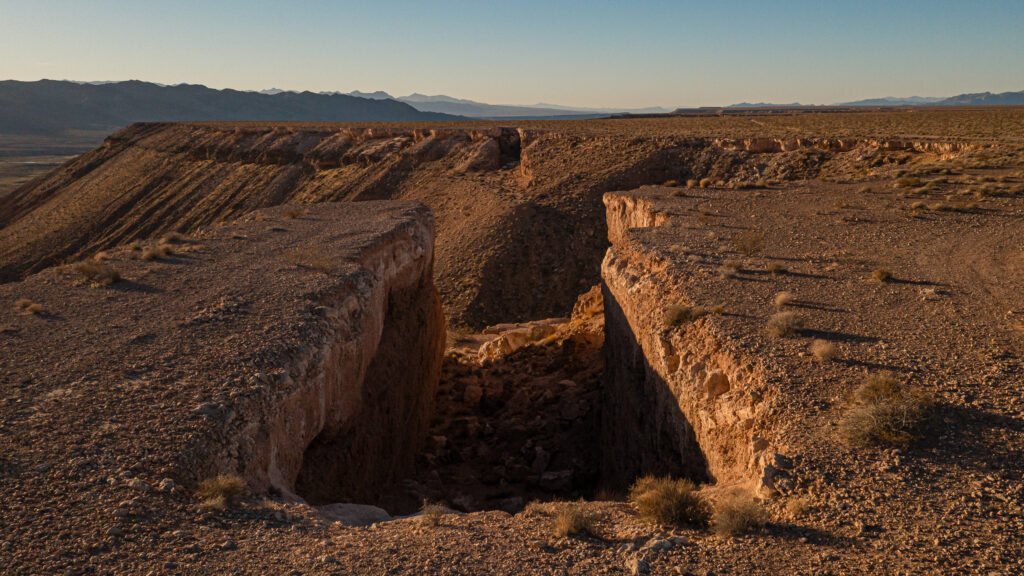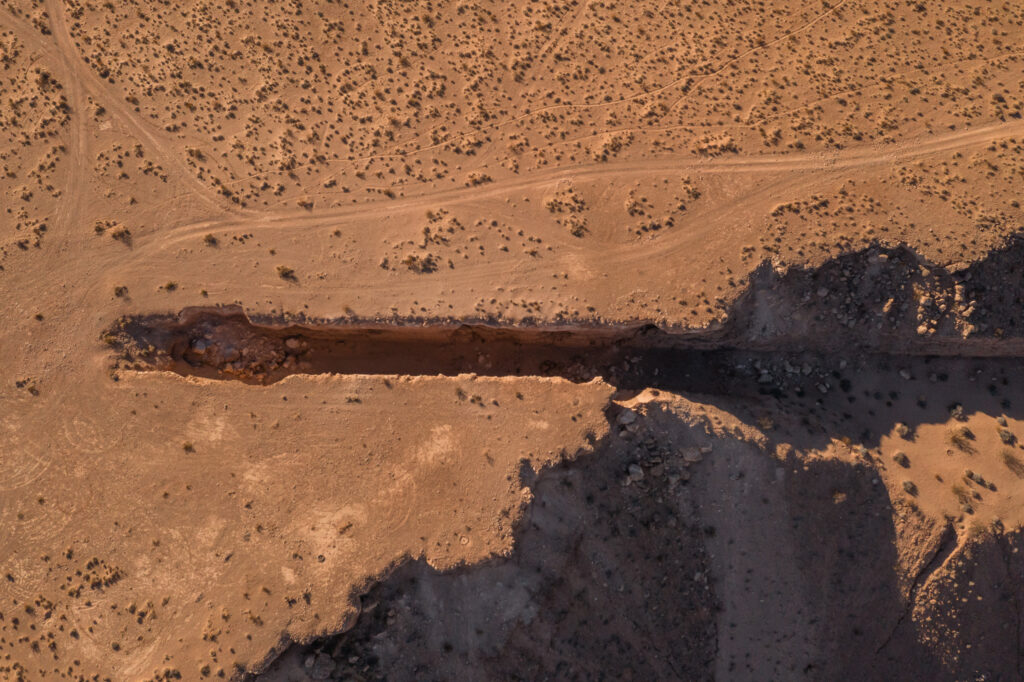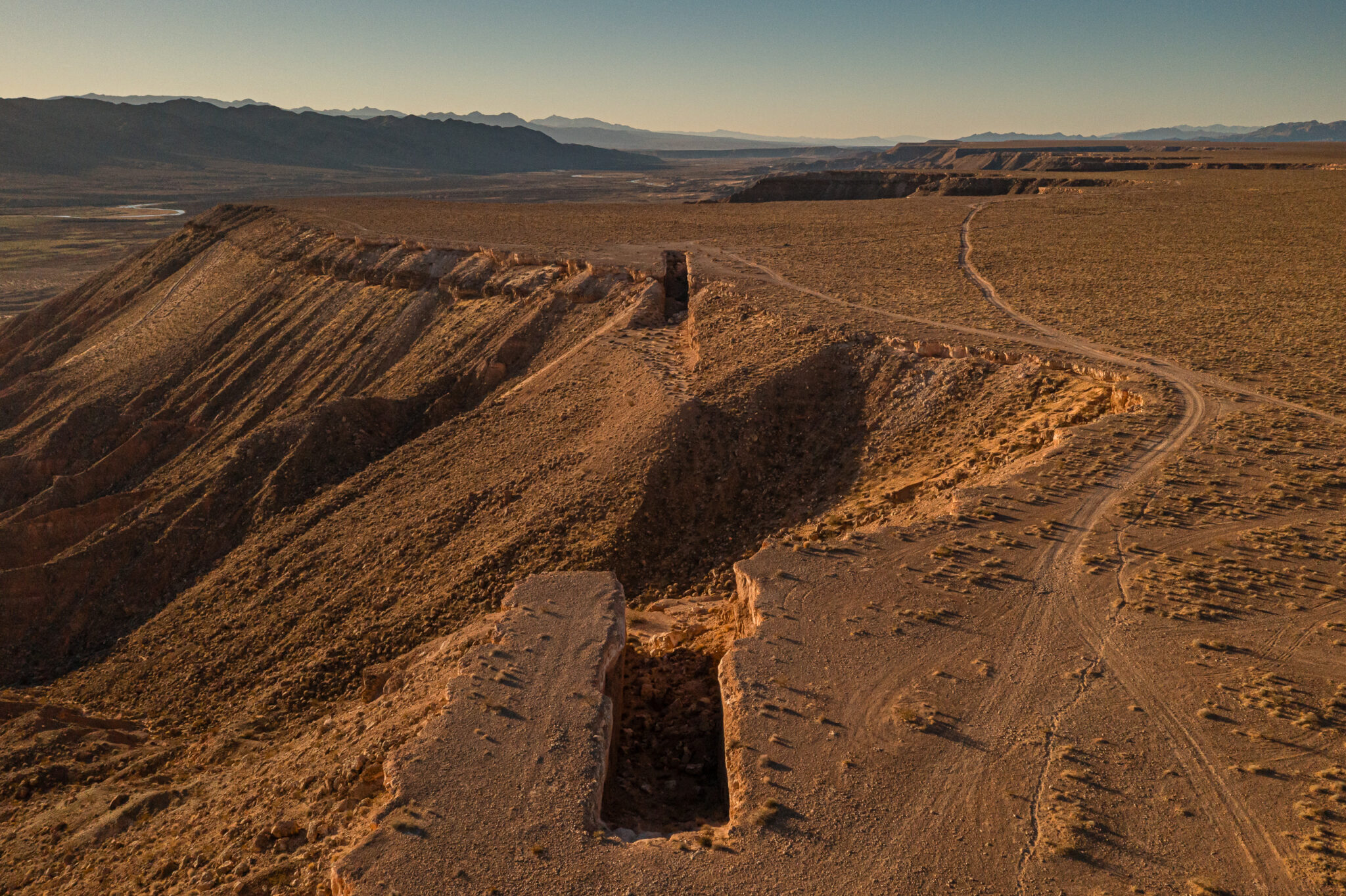“There is nothing there, yet it is still a sculpture” – Michael Heizer
In 1969, 23-year-old Michael Heizer instructed a work-crew provisioned with explosives and a bulldozer to tear two huge trenches into Mormon Mesa overlooking the Virgin River lazily meandering towards her consummation with the Colorado River in Lake Mead. The trenches, each 30 feet wide and 50 feet deep, face each other across a natural canyon in the mesa’s edge creating the 1,500-foot-long piece of land art Double Negative. The aerial image above shows the environmental sculpture viewed from north looking south.
Approaching the work via the double track access road, there is no sign of the work until arriving right at the mesa’s edge when the first trench is seen, and then with delightful surprise, its companion located across the arroyo, visually connecting and completing the land art. There are no signs explaining the purpose of the trenches or the name of the art work.
As suggested by the title, the work is negative in two ways. Firstly, the trenches subtract material from the mesa to create the sculpture. Secondly the alignment of the trenches across the canyon incorporates the negative space between them to complete the sculpture, which is best viewed from ground level as shown in the photograph below.
Michael Heizer was an early pioneer of the land art or earthworks. In this movement, the art is characterized by site location which sets the context, creation in nature often using materials found on site, and an emphasis on natural processes where the works evolve over time due to interaction with the elements. The movement embraced a pure aesthetic and an anti-establishment philosophy as the artists wanted to create work that was uncollectible. Ironically Double Negative is now part of the permanent collection of Los Angeles’ Museum of Contemporary Art and provides the museum with a remote, physical location in the Nevada desert.
Initially Michael Heizer noted he wanted the museum not to conserve Double Negative and rather allow nature to reclaim the land through erosion processes1. More recently he has found the degradation depressing and plans to raise money to restore the work to original clean lines2. The local community is protective of the artwork, and successfully objected to plans for a $ 1 billion solar farm project on Mormon Mesa as it would ruin the context of the work and so harm tourism3.
Double Negative is a prelude to Michael Heizer’s primary life work, City, a mile-and-a-half-long, mile-wide monumental sculpture in Central Eastern Nevada. The work, comprising excavations and concrete structures, took more than 50 years to create from 1970 to 2022. The work is owned by a foundation, which controls access and only allows a limited number of visitors each year over the summer months. I am waitlisted for a rare opportunity to see the sculpture during the 2025 season. Not only is City uncollectable, it is also hardly seeable …
“It is just not my inclination to make small work” – Michael Heizer.


- William Wilson, “New Moca Acquisition is a Hole in the Ground”, Los Angeles Times, December 10, 1985. ↩︎
- Dana Goodyear, “A Monument to Outlast Humanity”, New Yorker, August 22, 2016. ↩︎
- Gabriella Angeleti, “Plans scrapped for solar project that would disrupt Michael Heizer’s Double Negative”, The Art Newspaper, July 26, 2021. ↩︎
